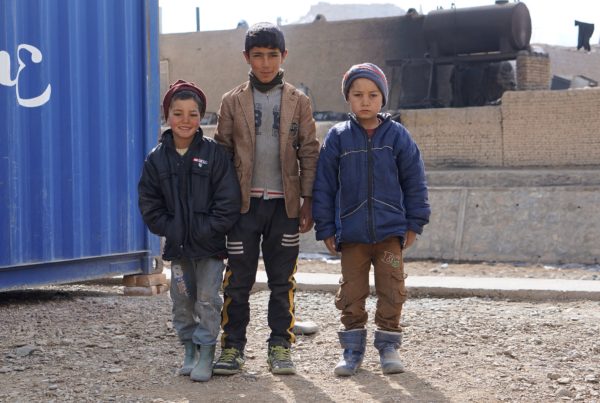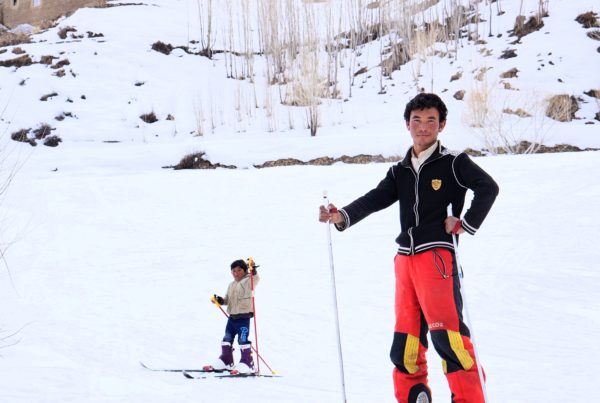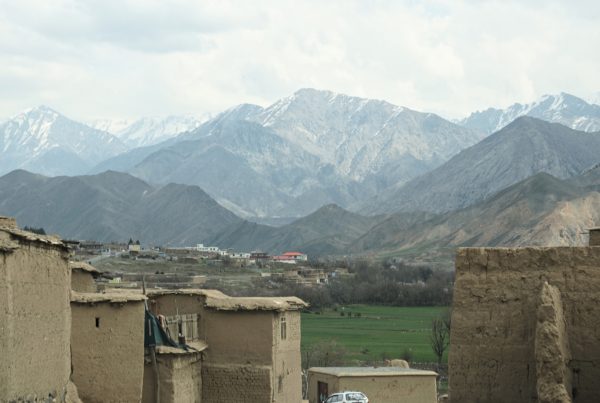This is an extract from The Kabul Peace House. You can buy copies of the book from this website or from The Book Depository which offers free postage worldwide. By navigating to this page, you will also find various ways to support the peace community in Afghanistan.
Follow me on Facebook, Instagram and Twitter for regular updates on the situation in Afghanistan.
Insaan worked with Afghan refugees in Pakistan for two and a half years from June 2002 to August 2004. During that time US and NATO forces had invaded Afghanistan and dismantled the Taliban regime. The first contingent of foreign peacekeepers, the NATO-led International Security Assistance Force (ISAF), had been deployed in the country and the international community was pouring in funds, trying to rebuild a nation on the verge of collapse. By 2004, three years after the United States had invaded Afghanistan, the Afghan people felt like the country might finally return to peace.
Insaan watched the families he had come to know as friends pack up their meagre personal possessions and begin the hopeful return journey to Afghanistan. Watching his new life walk away from him, Insaan felt the pang of heartache. He realised that he had grown to love these polite, resilient, hospitable people. He decided to follow them home.
Insaan road-tripped across the border from Quetta into Afghanistan, hopping on trucks and hitching lifts all the way to Kabul. Afghans didn’t recognise Afghanistan as a bordered nation. They didn’t see themselves belonging to a physical space. They belonged to tribes and communities that crisscrossed the imaginary boundaries of the artificially created nation states of Central Asia. The modern borders of Afghanistan were formally drawn up by the British and Russian empires during the late 19th century and were not designed to promote cultural and ethnic harmony in the region. The Durand Line, for example, was a tactical border created in 1893 by the British to divide and weaken the Pashtun tribes between British India and Afghanistan. The border still caused trouble between Afghanistan and Pakistan, since Afghanistan refused to recognise the Durand Line as the international border between the two countries. As Insaan crossed those arbitrary boundaries, in the company of millions of refugees, whilst yet another great empire attempted to invade Afghanistan, he wondered if humanity ever learned from its past.
Insaan was deployed to a mountainous region of central Afghanistan, where he worked in public health education for an international NGO. He stayed in a hotel for several weeks while he explored the regional parts of the province, investigating the work he was about to commence. In that time, he came to know Zee – a restaurant owner who wore a dirty apron, smoked cigarettes while he cooked and cut meat on an unhygienic table. Zee was used to drifters like Insaan and took a liking to him. He often invited Insaan to smoke marijuana with him behind his restaurant. Insaan would always decline the offer to smoke, but he would chat with Zee while Zee got high. Insaan quickly learned that Zee was not a normal Afghan.
Zee grew flowers, which were seen as a luxury in Afghanistan, and Insaan would bring him seeds for his garden. Zee had adopted a crippled black crow who hopped around his restaurant on one leg. He used to feed the bird scraps, and he told Insaan the crow was his best customer. One evening Insaan noticed the crow had disappeared and Zee, who was quite upset, told Insaan that the crow had hopped into the kitchen and then into the tandoor and had incinerated itself.
Zee was also fond of dogs, which was strange in Afghan society as dogs were traditionally considered unclean animals. Insaan told him that in other countries people liked dogs, gave them names and kept them as pets. After several days Zee came back to Insaan with a stray black puppy that usually lazed under an apple tree near his restaurant.
‘Let’s give this dog a name,’ he said. ‘I want this dog to be fast and quick and be a good watch dog. Maybe we can use him for dog fights when he is older. Let’s call him Electricity.’
Zee had brought Electricity to his powerless village. Despite Zee’s great ambitions, the dog didn’t move from under the apple tree. After a month or two, Zee came back to Insaan and said, ‘I don’t think Electricity is a suitable name. I’m going to give him away.’
When Zee learned Insaan was staying in a hotel, he was outraged.
‘I will take you in as my family. Come and stay with me in my village,’ he said.
Insaan was surprised by the invitation but he was also aware of just how significant the offer was. Only family members were allowed in these rural villages. The only way Insaan could enter as a stranger was by invitation. Zee’s offer of refuge, and his invitation to become part of his family, touched Insaan’s heart. He accepted.
When Insaan joined Zee in the village he immediately regretted his decision. He had not realised it, but Zee expected Insaan to live in his house with his mother, two wives and six children. Insaan tried to politely decline the offer but Zee was quick to negotiate.
‘I’ll build a separate room for you,’ Zee said.
Unwilling to cause offence to Zee and his family, Insaan agreed to this arrangement.
Understandably the villagers were suspicious of Insaan, the newcomer. They knew nothing about him except for Zee’s assurances of his character, assurances established during a three-week acquaintance. Insaan built trust in the village community by not making eye contact with any of the women in the village for an entire year. If women passed him in the village, he would look down at the ground and step aside on the path, acting against his own nature which was to address, greet and look people in the face. He found the experience very dehumanising, but, with time, people began to trust him enough to use him as a doctor. They brought their loved ones to see him, which fostered more goodwill and a growing relationship with the community.
Insaan moved into the new room under the impression that he was going to live alone. But Zee and Zee’s mother had other plans.
‘Why would you want to live alone?’ Zee said. ‘It is strange. No, you cannot live on your own. You are family, you will have a family member live with you.’
Insaan asked if they could respect his desire to live alone and they refused.
‘You mean you don’t like your family members? You don’t want us to live with you?’ Zee responded.
Insaan blustered and argued. He wanted privacy, he wanted solitude, he wanted his own space. They told him they would start knocking before entering his room, but they still didn’t think he should lock his door. Insaan thought of the Afghan author Tamim Ansary, who wrote that Afghans could have a space of solitude by being with another person, that the Afghan sense of group was just as real as their sense of self, perhaps more so. When Insaan first read that, he thought, if that is true, Afghans don’t understand solitude.
After much argument, Insaan finally relented, realising he would never be allowed to live alone in the village.
‘If there has to be someone, just make sure he doesn’t talk,’ he told Zee.
They sent him fifteen-year-old Nadir. From this point on, Insaan’s life was turned upside down. Nadir arrived at Insaan’s door looking sheepish, devastated, lost. Maybe this will work, Insaan thought. Not only did Nadir not talk, he could not talk. He was vacant. He was immersed in his own world. They would exchange greetings and that was it. One day Insaan asked Nadir, ‘There are theories that say there are seven heavens on earth and we are currently in one of those heavens. Which one do you think we are in?’
Nadir contemplated the question and then said: ‘The fourth one because then there are heavens below us and heavens above us.’
Insaan warmed to this humble, unassuming character. He perceived a great wisdom in this closed book.
Nights in the house together were particularly quiet. Insaan would contemplate the calamity of war and scribble in his notebook, while Nadir stared into space. The only sound would be the crackling of the fire, or the elements outside, a whistling wind from the Grandfather Mountain or the rum dum drum of a downpour. Nadir’s slow opening up to Insaan was unexpected and beautiful. Perhaps it was Afghan culture to reveal one’s deepest emotions and feelings at night, a trait belonging to their ancient oral culture. Perhaps in this closed society, where people so often couldn’t speak their mind, people felt protected by the cover of darkness and encouraged by the warmth of a fire.
‘My mind is just gone,’ Nadir broke the silence.
His voice quavered. Insaan’s breath stopped in his mouth and he looked over at Nadir, who was staring at the roof, grief-stricken.
‘How can I help? Why are you so sad?’ Insaan asked. But Nadir did not say any more that night.
Insaan used to think he could only know himself by possessing his own space. Now he was not so sure. Maybe knowing oneself involved recognising other people’s spaces as well and allowing those spaces to merge. Before entering this village and meeting Nadir, he feared he would lose himself by losing his privacy. Maybe that fear wasn’t so well founded, because he hadn’t lost himself in this mountain community. Maybe his understanding of society, science, communication, of being, was just his version and he needed to learn from Nadir. He needed to learn what Nadir was going through, what was going on in his mind.
In the beginning, Nadir’s stories only came out when that shared space, with the tea and the fire and the dead of night, morphed into a space where Nadir felt safe enough to say, ‘I’m in a cage and I don’t know how to get out of it.’
Insaan wondered if this was clinical depression. Does he need medica- tion? Insaan asked himself. The answer was no. Nadir was hurting. He lost his father during the war, killed by the Taliban. He was trying to make sense of a world that stole his father from him when he was twelve.
These thoughts on shared space, shared healing and relational learning were the embryonic stages of a philosophy that was forming in Insaan’s mind. An Afghan solution to Afghan questions of war, peace and healing.
Insaan continued working in health education with remote villages in the area. During his visits, he learned that lack of clean water was one of the major killers of Afghan children in the region, but he also concluded that every Afghan family in the region needed more than just medical assistance. They needed safety, they needed to be emotionally and mentally healthy, they needed to process feelings of anger and revenge, they needed to be educated, and they needed to know how to work with the land. He talked to families decimated by war, who would do anything for the killing to stop.
No-one was exempt from war. Every family had a story of losing someone.
A seven-year-old Afghan boy told him, ‘Without peace it is impossible to live.’
Insaan began to see that the best way to address these families’ problems was to address the problem of war, to understand and challenge the world’s capacity for violence. In that way, his transition from public health professional to peace activist was not purposeful, it was gradual and subconscious, a reaction to the environment around him.
During the day, Insaan would often walk far from the village, high into the mountains with the village, the valley and the river spread out below him. The snowy tops of the peaks fanned out around him. He truly felt like he was looking across the roof of Afghanistan.
We are at war with everything, Insaan thought. We are at war with countries. We are at war with our neighbours, with our fellow human beings. We are at war with religion, with ideologies, with cultures. We are at war with terror, we are at war with drugs, we are at war with our climate. We are at war with fat, with sugar, with our own minds. Our world is not healthy. So why this obsession with violence? Why do we hurt ourselves and others so much? What can I do?
Each evening, Insaan returned to his room to read and write and contemplate in the company of Nadir. Insaan had painted the room orange and red and he called it the Room of Revolution. When Zee built the room for Insaan, he accidentally mixed the mud with wheat grain, so by the first spring wheat had sprouted in the walls.
‘What am I supposed to do with this wheat in my walls?’ Insaan asked Zee.
‘Harvest it,’ Zee replied casually.
It was in this wheat-filled house that revolutionary ideas began to take seed, grow and sprout. Insaan read widely and thoroughly; he discovered Thoreau and Tolstoy, and Gandhi and King and Mandela, and he became convinced of the power of love.
If war was the problem, peace was the answer. If violence was the disease, love was the cure. Tolstoy talked about turning the other cheek and not retaliating, about the need to resist evil with love rather than violence. He learned of Gandhi’s ‘Satyagraha’, the force which was born of truth and love, and his philosophy of Ahimsa, the desire for peace, justice, order, freedom and personal dignity. Where violence degraded and corrupted, nonviolence healed and restored a basic law of being.
Insaan came to understand that there were universal values that most people understood to be true to life, that were common throughout all religions. Treat others as you would want them to treat you, love thy neighbour, thou shalt not kill. So, why was it that most human beings acknowledged these universal values, but they were not public practices? Why did human beings denounce murder and immortalise the conqueror? Why was killing illegal, but warfare glorified?
Almost by accident, Insaan had stumbled upon the core philosophies of nonviolence, teachings that originated thousands of years ago and had spread all over the world. This was not a passive movement; it was a movement of positive action, the true expression of which was compassion.
Through the work of Martin Luther King Jr, Insaan learned that nonviolence sought more than just an end to violence. The goal of nonviolence was to use love to liberate humanity from discrimination, prejudice and hatred. Real freedom liberated both the oppressor and the oppressed.
This was not a futile and ineffective idealism. Gandhi and King had taken on two of the greatest modern empires in their struggles for independence and civil rights – and won.
‘Nonviolence is a powerful and just weapon,’ said King. ‘It is a weapon unique in history, which cuts without wounding and ennobles the man who wields it. It is a sword that heals.’
Nonviolence didn’t just appeal to Insaan’s idealistic nature, it was as imperative to his being as breathing. Somehow Insaan had to make those universal personal values into public practices; an integral part of the public consciousness. If that seemed a formidable task, Insaan found comfort in his books. He was not alone in this endeavour, even if he was just one man in a small mud hut in Afghanistan. He was joining a historical, philosophical movement of thinkers and activists who had proven the effectiveness of nonviolence. It was a truly revolutionary idea, even if it was as ancient as the first religions. It was an idea that sought to completely change the nature of society, it was a threat to the established order, and for that reason it was something profoundly dangerous.
As Insaan’s ideas flourished, so did the wheat in the walls. By the time he emerged from the metaphorical woods, the surfaces had cracked so much that the walls were caving in and the structure was about to collapse.
In order to build a peaceful economy and a peaceful environment, Insaan theorised that the people of Afghanistan had to develop nonviolent relationships and practices. He wanted to be on that journey with them, but he wasn’t sure how he could achieve such a monumental task. He drew strength from a phrase he came across in his readings, a phrase attributed to American anthropologist Margaret Mead:
Never doubt that a small group of thoughtful, committed citizens can change the world; indeed, it’s the only thing that ever has.
It was time to take action.
This is an extract from my book, The Kabul Peace House, about a community of Afghan peace activists dedicated to nonviolence. This extract is set in the mountains of Central Afghanistan and beautifully explores the early stages of the group when the founder, Insaan, begins to learn about the philosophies of peace and nonviolence.
You can buy copies of the book from this website or from The Book Depository which offers free postage worldwide. By navigating to this page, you will also find various ways to support the peace community in Afghanistan.
Follow me on Facebook, Instagram and Twitter for regular updates on the situation in Afghanistan.



